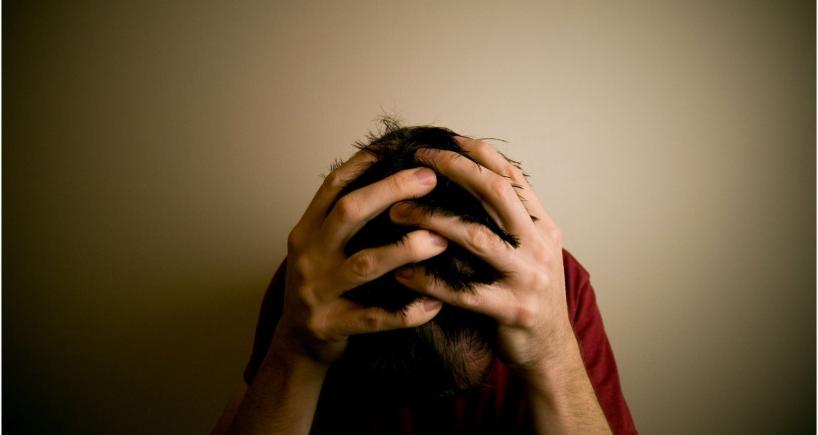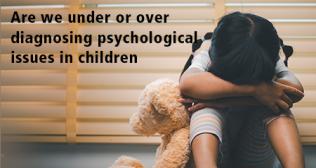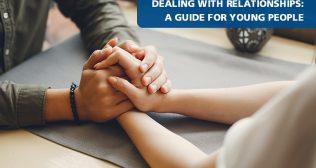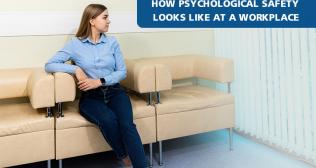
Frequently Asked Questions About Panic Attack?
1. What is a panic attack and what happens with a person going through it?
Panic attacks are periods of intense fear or apprehension that are of sudden onset and of variable duration from minutes to hours. They usually begin abruptly, and may reach a peak within 10 minutes. They may continue for much longer if the sufferer had the attack triggered by a situation from which they are not able to escape
2. In which condition, a person can experience a panic attack?
Panic attacks often seem to come on unexpectedly, but it can be associated with common triggers and contributing factors which includes stressful situations like major life events, high-pressure environments; substance Use like caffeine, alcohol, recreational drugs, or withdrawal from substances; mental health issues like generalized anxiety disorder, phobias, social anxiety, depression or bipolar disorder can sometimes involve panic attacks; overstimulation like being in a crowded, noisy, or overwhelming environment; and medical conditions such as thyroid problems, heart issues, or respiratory disorders.
3. What are its symptoms and causes?
Panic attacks typically involve a combination of physical and psychological symptoms Physical Symptoms include rapid heartbeat or palpitations, sweating, trembling or shaking, shortness of breath or a feeling of being smothered, chest pain or discomfort, nausea or abdominal distress, feeling faint, chills or hot flashes, and numbness or tingling sensations. Psychological and cognitive Symptoms includes feelings of unreality or detachment from oneself, fear of losing control, fear of dying, feeling of being trapped and intense feelings of impending doom.
The exact cause of panic attacks is not known. However, several theories suggest the disorder develops based on a complex interaction of biological, genetic, environmental and/or social factors and experiences.
4. How is it different from an anxiety attack?
Panic attacks appear suddenly and involve intense and often overwhelming fear. They’re accompanied by very challenging physical symptoms like a racing heartbeat, shortness of breath, or nausea.
Anxiety attacks are often triggered by stressors and can build up gradually. It can cause physical symptoms like a racing heart or stomach knots, but these symptoms are usually less intense and last longer than panic attacks.
Anxiety attack symptoms can be linked to mental health conditions like obsessive-compulsive disorder and trauma, while panic attacks mainly affect people with panic disorder.
5. How is it different from panic disorder?
Panic disorder is characterized by recurrent, unexpected panic attacks. Panic attack on the other hand is an abrupt surge of intense fear or discomfort reaching a peak within minutes.
6. How prevalent/common are they?
According to NCBI, the lifetime prevalence of panic attacks (PAs) is 13.2%
7. What are some effective ways to deal with panic attacks at home, workplace, or any other public place?
Dealing with panic attacks involves a combination of immediate coping strategies and long-term management techniques. Some of the approaches include
Relaxation Exercises, which include deep breathing exercise and Jacobson’s progressive muscle relaxation exercise. Deep breathing exercise is a diaphragmatic breathing which includes inhaling slowly through your nose for a count of four, holding for a count of four, and exhaling through your mouth for a count of four. Meditation, or yoga helps to reduce overall anxiety and stress levels.
Create a calm environment with a designated calming space along soothing items like a favourite blanket, calming music, or essential oils.
Staying active with regular physical exercise and following daily activity schedule.
Limit anxiety provoking substances like caffeine and alcohol etc
Take regular break from work and routine, which include stepping outside for fresh air, go for a walk, or find a quiet place to regroup.
Identify and plan for known triggers at work. Have a strategy in place for managing stressful situations.
Seek support from friends, family members, or from mental health professional if needed.
Work with a mental health professional to develop coping strategies specific to your work environment and potential stressors.
8. How is it diagnosed and treated? Does one have to live with it for one's life?
Diagnosing a panic attack involves a combination of a thorough medical history, a physical examination, and psychological assessments. Medical history is required to rule out any other medical conditions or medications used that could be contributing to symptoms. A physical examination is conducted to rule out other conditions that could cause similar symptoms, such as heart problems or thyroid issues. Psychological assessment is done as the diagnosis is often based on specific criteria outlined in the Diagnostic and Statistical Manual of Mental Disorders (DSM-5). For a panic attack, the DSM-5 criteria include experiencing a sudden onset of intense fear or discomfort, with symptoms like rapid heartbeat, sweating, trembling, shortness of breath, chest pain, nausea, dizziness, or feelings of unreality.
In the management, intervention is aimed at preventing further episodes of attacks, anticipatory anxiety, agoraphobic avoidance, and achieving premorbid functioning by achieving full remission. It includes pharmacotherapy and psychotherapy. Most of the panic attacks subsides spontaneously within 20 min. Explaining the very brief nature of illness and reassurance is helpful. Benzodiazepines are the drug of choice to abort a panic attack on as-needed basis. In general, the first-line drug of choice is Selective Serotonin Reuptake Inhibitors (SSRI), though another antidepressant group (SNRI and tricyclic) they may also be tried. In psychotherapy, the most treatment guidelines recommend the cognitive behaviour therapy (CBT). The other psychotherapy used are psychodynamic psychotherapy, interpersonal psychotherapy, and acceptance-based approach.
9. What are some measures to employ in life to prevent it?
Preventing panic attacks often involves a combination of lifestyle changes, coping strategies, and sometimes mental professional help. Lifestyle Changes include regular exercise, healthy and balanced diet and adequate sleep. Relaxation techniques like deep breathing exercise, progressive muscle relaxation exercise, yoga or mindfulness meditation had been shown to have preventive effect.
Psychotherapy like cognitive-behavioural therapy which can help to identify and change negative thought patterns and behaviours, and exposure therapy which can help to desensitize the panic triggers, are found helpful in preventing panic attacks.
Building a good social support System like connecting with friends, family, or support groups can provide comfort and reduce feelings of isolation.
Learning more about panic attacks and anxiety can help to feel more in control and thus preventing the panic attacks.
10. What are the health effects of a sustained panic attack for a long time?
Various studies had shown that sustained or frequent panic attacks can affect both physical and mental well-being. Physically it can have cardiovascular issues, respiratory issues, digestive Issues and weakened immune system. Psychologically it can lead to increased anxiety, depression, avoidance behaviour, impaired cognitive function. It also effects the quality of life and impacts negatively on work and social life.
Categories
Clear allMeet the doctor

- Mental Health and Behavioural Sciences | Mental Health and Behavioural Sciences | Psychiatry | Clinical Psychology
-
12 Years
-
1400



















